What Would a New Library Branch Cost?
While reaching out to a long time neighbor to ask if she would contact the Library Board of Trustees to support a West Boise Library Branch, she replied with some hesitation:
“… I’m not sure we need another one in the area, we need so much more money for our schools…”
It’s an excellent question, and it touches on many related topics about funding.
First of all, whatever happens in the Boise City budget is totally unrelated to what happens with the Boise School District budget or West Ada School District budget. They are separate entities. What they have in common is that they are all funded largely (but not exclusively) by property taxes.
What she’s really asking though, I think, is how much would an additional library branch cost me? How would it impact my property taxes?
These are great questions. Nothing the city does is free after all. At the same time, keep in mind that the facilities plan is answering the question “if the city were going to improve libraries, how should we do it?”. The goal of the facilities plan, at least at the current stage, is not to develop the funding options. Still, it’s a valid question so let’s jump in.
The short answer:
Between $0.57 to $1.14 / month (and likely towards the lower end)
How Much Would an Additional Library Branch Cost Me?
There are two components to funding capital projects like fire and police stations, parks, and libraries. First the one-time cost to build the project, secondly the cost to maintain it, which is part of the city budget every year.
Since we don’t have a plan to add a library branch in West Boise, it’s hard to estimate what it would cost. I see two options for a library branch:
- Leased Space. Currently Hillcrest and Collister branches are leased space, which if I recall correctly cost roughly about $100,000 / year in commercial rental fees.
- Standalone Facility. The last standalone facility to be constructed was Bown Crossing, which was built from 2015-2017. It cost the city $8 million to build, but the land had been acquired much earlier, in 2001. Estimates for constructions costs today are much higher.
The current draft facilities plan calls for doubling the space for Hillcrest and Collister, and for improvements to the main library in a second phase. I think it’s likely that standalone facilities will be proposed for Hillcrest and Collister. Together these would very likely exceed $25 million in cost, which would require a city wide vote to approve these projects. Without a West Boise branch as part of this plan, I would not vote for a levy for library improvements. With a West Boise branch, I would.
If the city approaches these projects individually in separate phases, I imagine the cost for each would be less than $25 million and funding might be possible without a levy, by saving money in the capital expenditures fund.
Equally important to what would the cost of a new project be is what is the ongoing cost, the cost to run the facility once it’s built. I can examine that with more accuracy. To answer this, we only need to look at our city budget and data about property taxes, which is readily available.
Boise City Budget and Property Tax
I’ve pulled budget data from budget documents the city has published online:
FY’26 proposed budget (soon I believe an “adopted” budget will be published as this budget has been approved by City Counil)
Ada County Assessor Dashboard has details Median Home Price. I selected Property Type: Residential, Improved; Location: Boise.
Here’s the data put into a spreadsheet:
Why am I using the Median Home Price? Because I don’t know the value of your property. Half the properties are assessed higher than this number and half the properties are assessed lower. It’s the middle value. Half the people in Boise are paying more tax than this and half the people are paying less. (If you’re renting, you’re indirectly paying property tax).
Property tax is not the only source of revenue for the city but it is the largest; the one most of us are familiar with. The revenue sources vary over time as far as how much each is a component of general fund revenue, but they fund general fund expenditures equally. We can take how much the city spends on library as a percent of the overall expenditures, multiply that by our property tax number, and calculate how much we are funding libraries. For the median property tax payer, here are recent amounts:
The city currently has 5 library branches (technically the city partially funds a sixth, at roughly $0.5M annually, the Ada County Community Library at 5 Mile and Victory, with the annexation of land in that area, including the library itself): the main library, Cole & UStick, Bown Crossing, Hillcrest, and Collister. Therefore a super simple approach to determining the cost to fund a 6th is to take the overall cost and divide it by 5 (or multiply by 20%). This is overstating the expense however for a couple reasons. (1) Some of the costs for the library are shared by all the branches. (2) Not all branches are created equally. The main library is far larger than any branch library and costs far more to maintain. Therefore I believe a more reasonable estimate is half of the 20% value. And realistically, the actual cost may be even lower.
Here’s a visual representation of these numbers:
So we have a rough idea of the ongoing maintenance cost of a new library. $6.86 / year, or $0.57 / month for the median tax payer.
What about the cost to build out the library facilities plan? This is highly dependent on how many new facilities are created and what form they take.
Remember I mentioned the capital expenditures fund earlier? Taxable revenue is directed to two places: the general fund and the capital fund. Our FY’26 budget puts $41M into the capital fund and $331M into the general fund. I think the capital fund expenditures are the most contentiously debated use of our city tax dollars. These are the long term projects that we all want to see. They also support major equipment that lasts a long time. A new fire engine for instance. That’s why it’s questionable if capital fund dollars could be sufficient to fund something as large as a new library facility and why a levy may be required.
A Growing Property Tax Base
This is why I believe a library in West Boise in justified. West Boise residents have been paying for all city libraries as long as they’ve been paying Boise property taxes. The city does a good job of keeping these taxes pretty even, which is very challenging despite inflation. This chart shows median property tax for the last 5 years:
(This data comes from the levy rate which is visible on the property tax bill you receive in November annually as well as the Ada County Assessor website showing median assessed home values in Boise).
Here’s the interesting piece: Boise’s tax base has been growing. That means even though our taxes have been relatively even, the city’s budget both in revenue and expenditures has been growing at a faster pace. Even though we’re paying about the same in taxes, the city can and is doing more and more. To deny tax payers in the one area of the city not covered well by libraries a library branch in the facilities plan against this backdrop is simply a way for the city to say you don’t matter. When we say Boise is a City for Everyone, we don’t mean you.
Library Branches Serving Boise Citizens, 2025:
Property Tax Increase Limitations
“I didn’t read anything written above — I just hear new stuff and I don’t want my taxes going up”. It’s important to remember that city property tax revenue increases are limited by state law. Property tax revenue is not allowed to increase by more than 3% year over year. However, if a city does not take an increase one year, it is allowed to take that foregone increase in a later year. Boise has had several years recently where it did not take a property tax increase. However, the city is not immune to inflation. Employees would like modest raises, and expenses overall have been going up. Last month a 3% increase with a 1% catch-up increase was approved. Fy’26 property tax revenue is projected to be 204M, whereas Fy’25 revenue was 190M. Wait, that’s more than a 4% increase?! Yes, the 4% limit is for the base tax rate, the but city is physically growing. Both new construction as well as annexation are ongoing; the tax base is increasing. Your individual tax rate shouldn’t go up by more than 4%. However, property values don’t all go up evenly either, so your increase could be more or less than that.
Where Do All My Property Tax Dollars Go?
Allocating property tax dollars against all city expenditures provides an interesting view to think about how your tax dollars are being spent. I believe most folks are unaware of these details. Of course as this is about library expenditures, I’ve highlighted them. This data is from the FY’26 proposed budget, linked above.

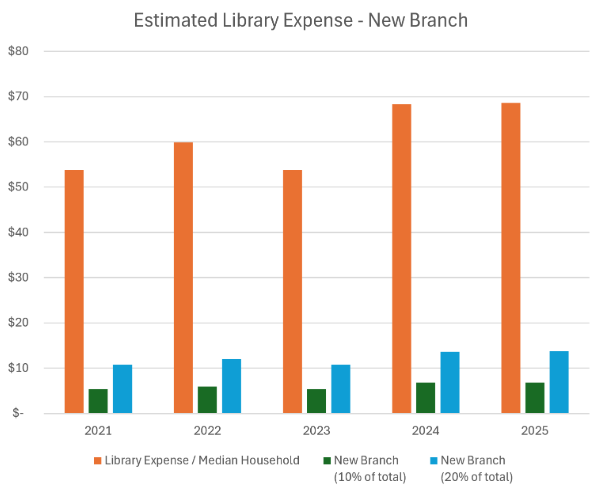



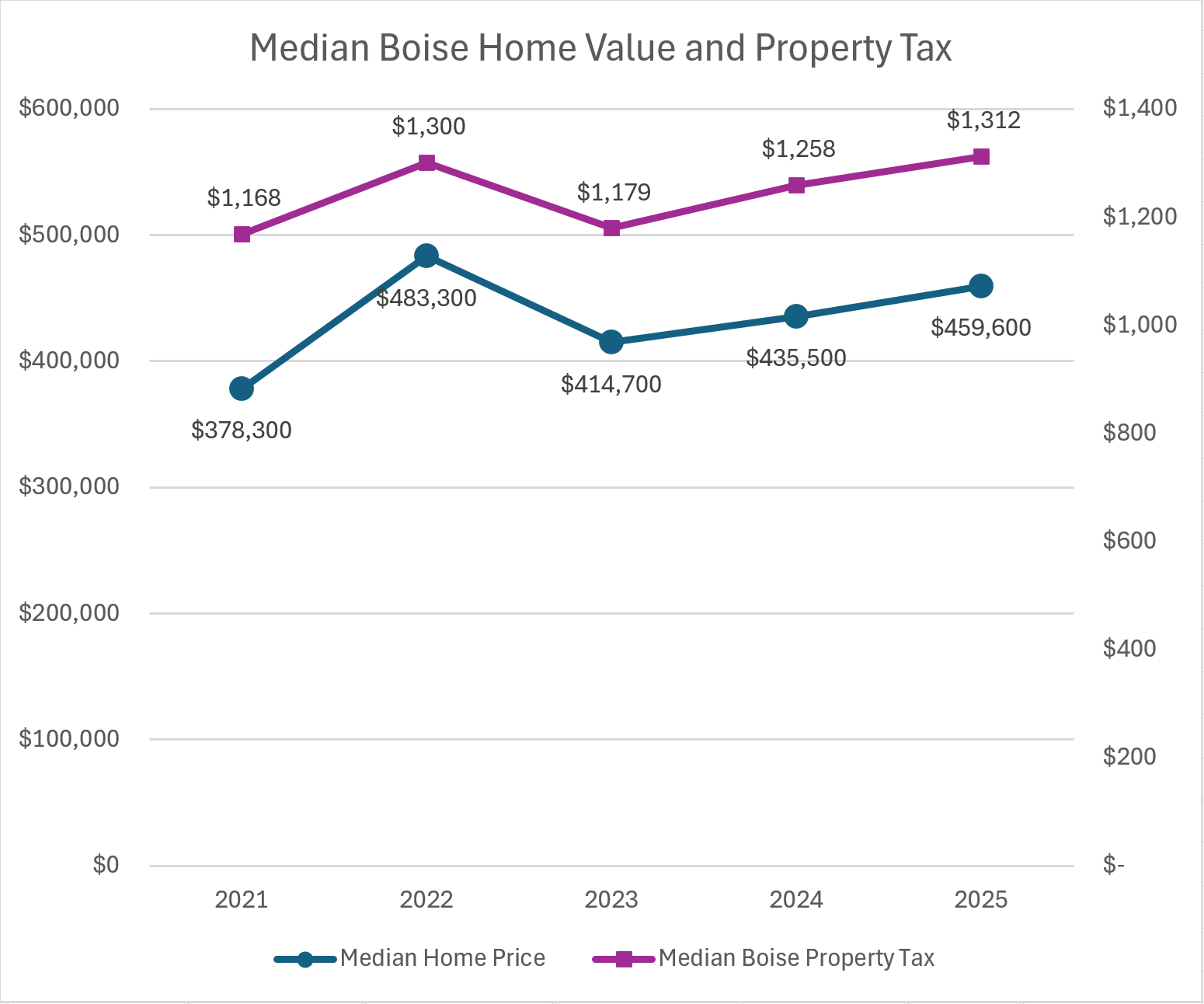
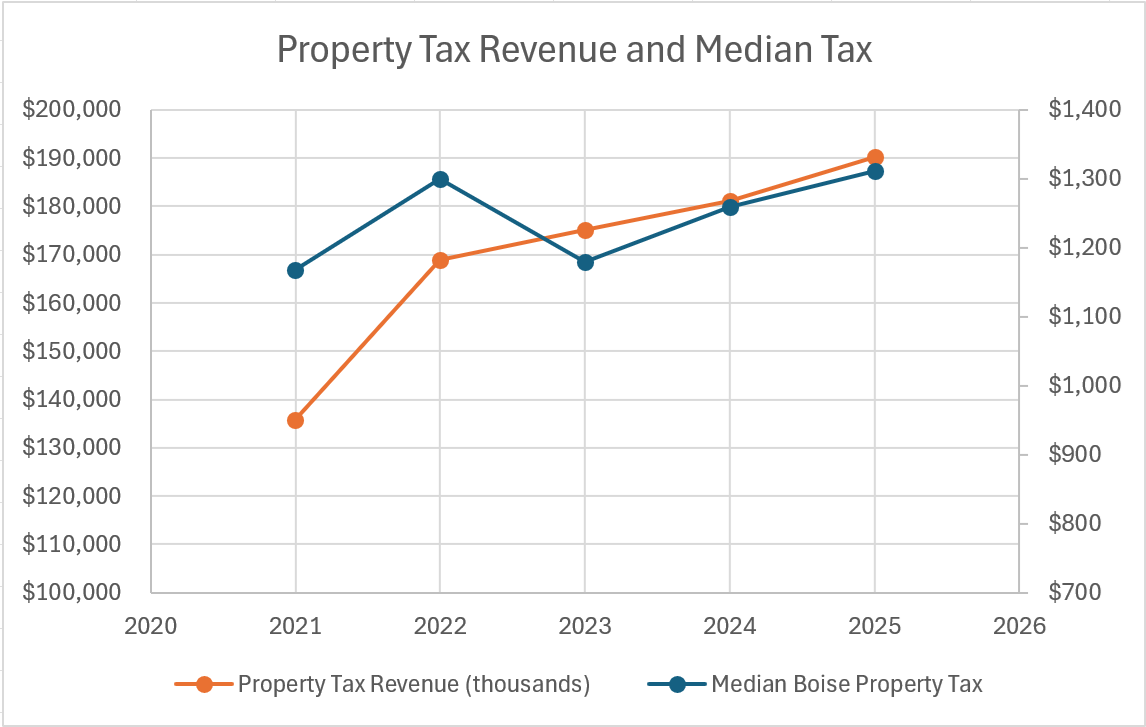
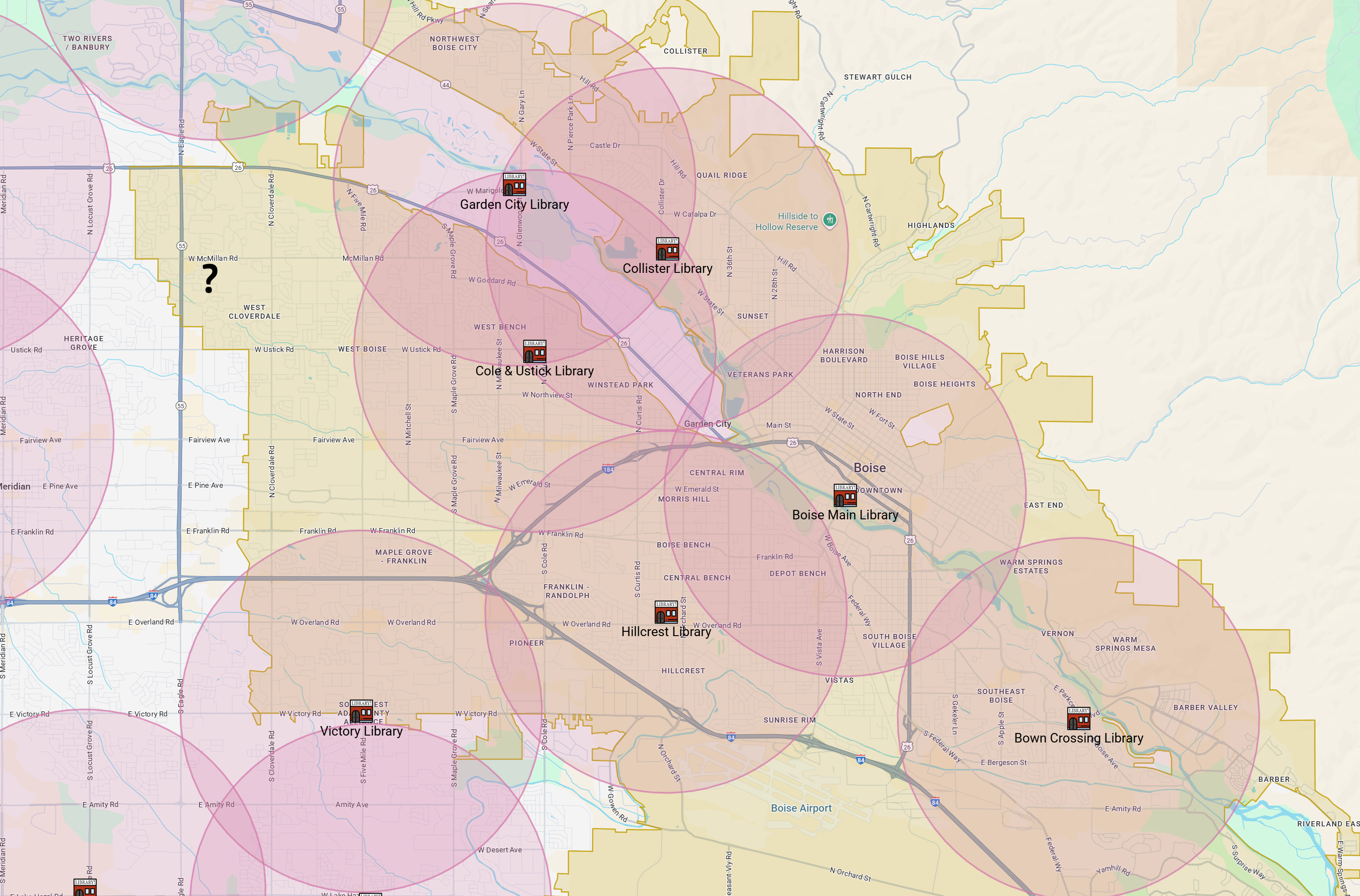
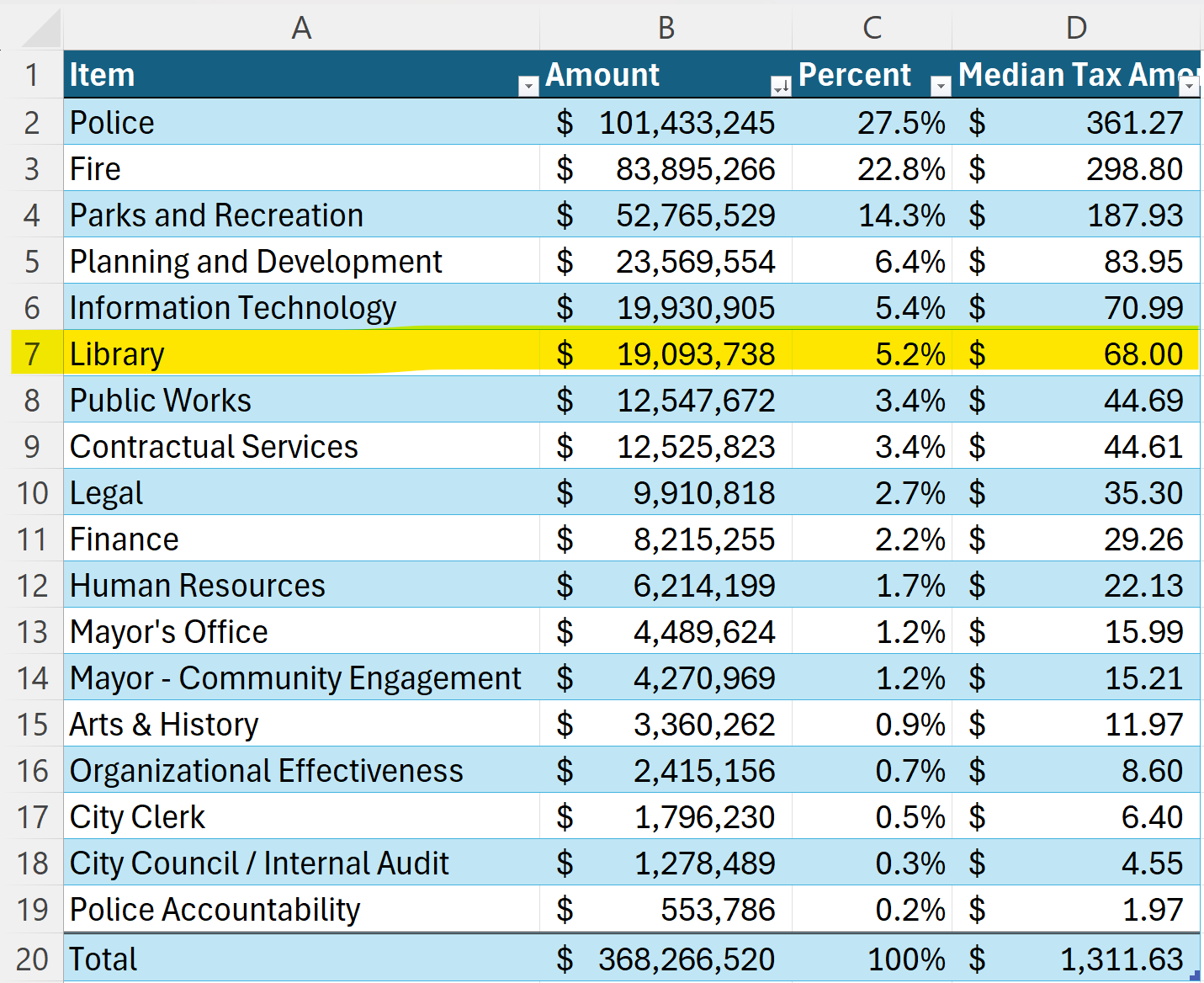
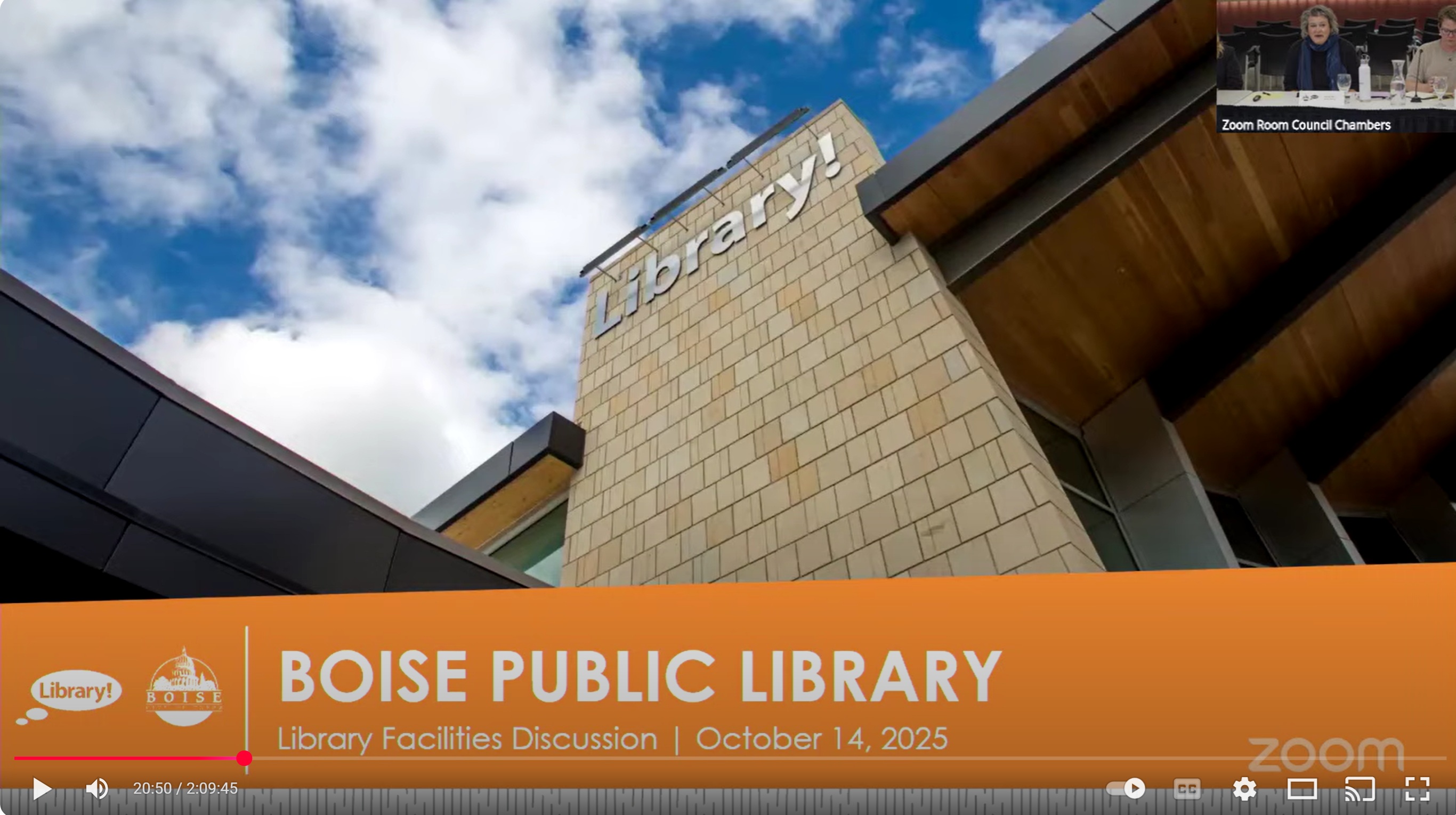



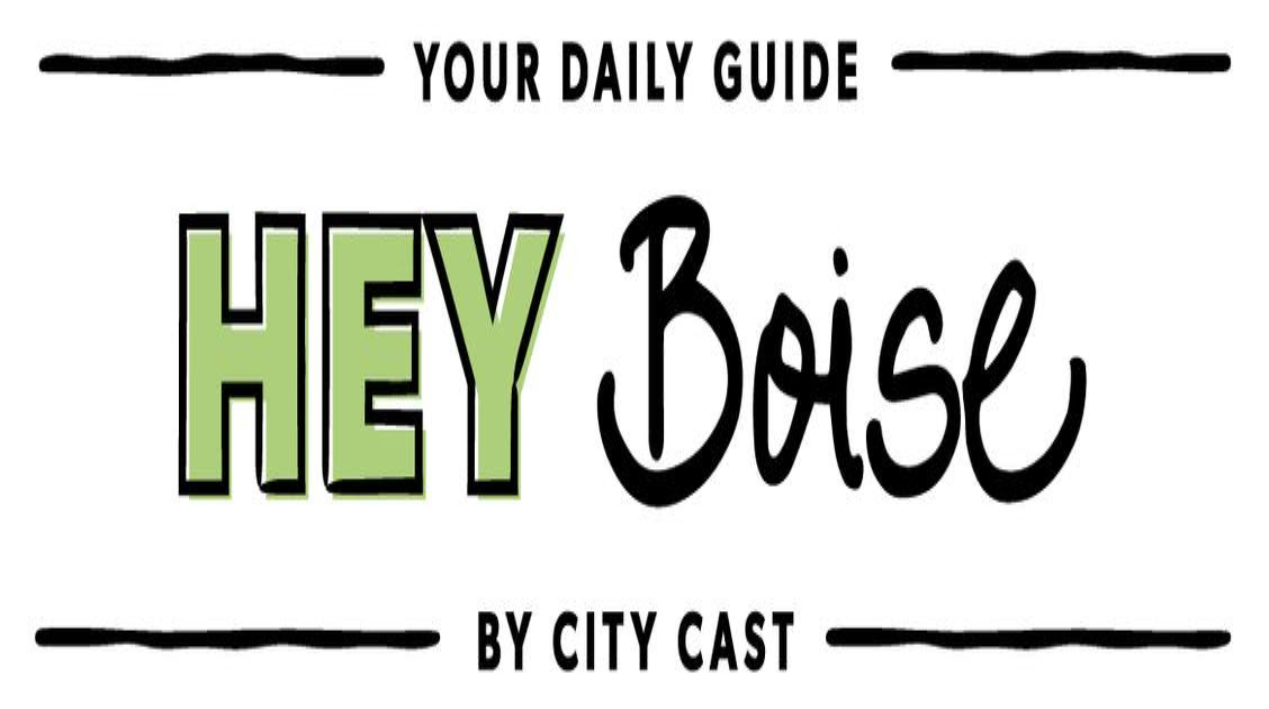
The question isn’t so much about, “Will my taxes go up if Boise builds a new library?” They won’t because city tax increases are limited by the state government and Boise is already taking the maximum. The question is, “Where is my tax money going if not for a new library?” The answer to that is in the Boise budget. The city’s budget is the best indicator of the city administration’s priorities. West Boise is not a priority for city leaders living in the city core. The new Library Strategic Facilities Plan will tell us Boise residents are already served, some residents perhaps over served, while leaving the library desert in West Boise barren as the city focuses on improving library access to residents to the east of us.
This is fantastic information., Mark! Thank you for taking the time to put this all together!